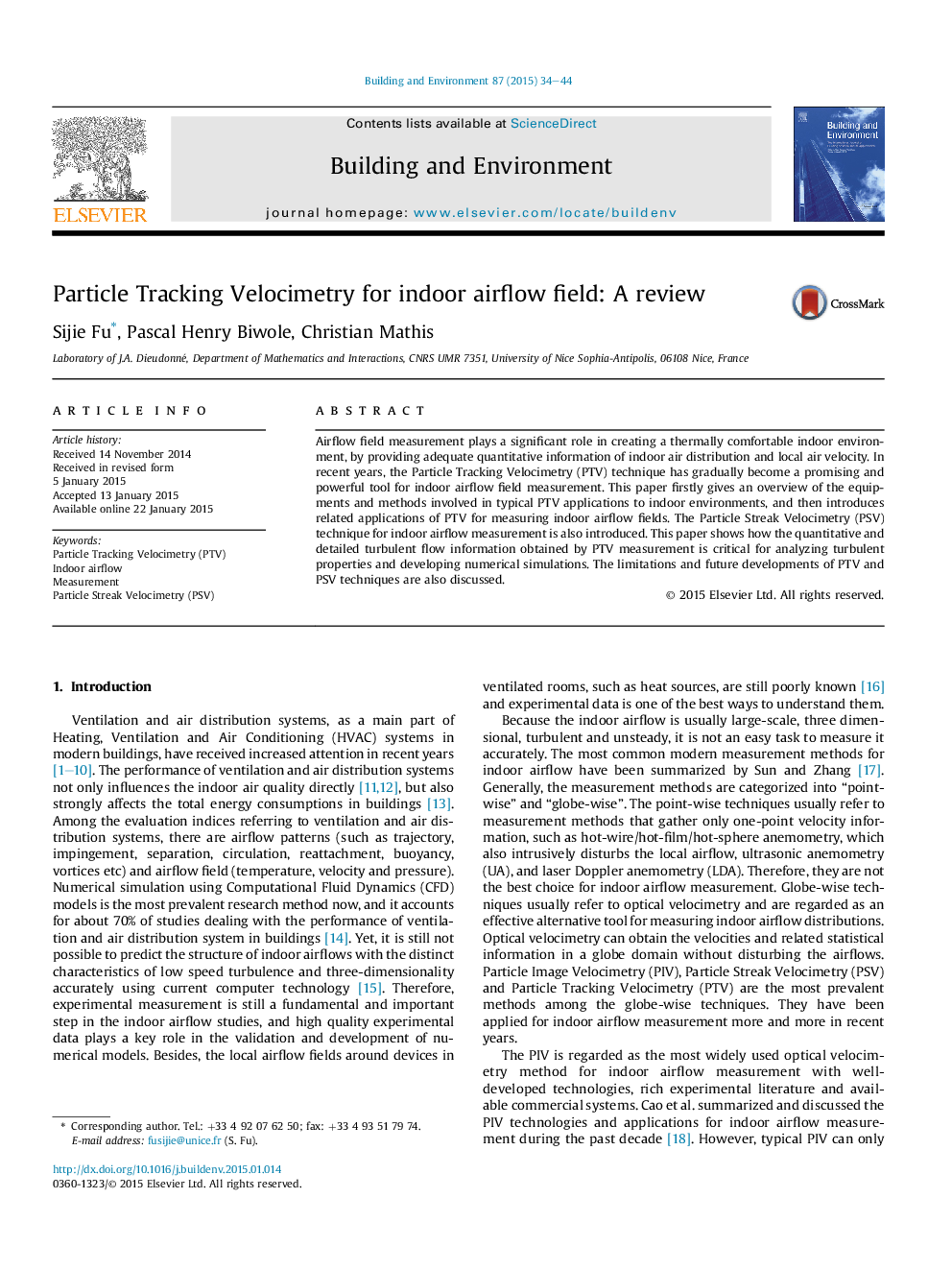| Article ID | Journal | Published Year | Pages | File Type |
|---|---|---|---|---|
| 248017 | Building and Environment | 2015 | 11 Pages |
•We review equipment, methods and applications of Particle Tracking Velocimetry (PTV) for large-scale indoor airflows.•The limitations and future developments of PTV are discussed.•The PTV data is critical for validating and improving CFD simulations.•The technologies and applications of Particle Streak Velocimetry (PSV) for indoor airflows are also introduced.
Airflow field measurement plays a significant role in creating a thermally comfortable indoor environment, by providing adequate quantitative information of indoor air distribution and local air velocity. In recent years, the Particle Tracking Velocimetry (PTV) technique has gradually become a promising and powerful tool for indoor airflow field measurement. This paper firstly gives an overview of the equipments and methods involved in typical PTV applications to indoor environments, and then introduces related applications of PTV for measuring indoor airflow fields. The Particle Streak Velocimetry (PSV) technique for indoor airflow measurement is also introduced. This paper shows how the quantitative and detailed turbulent flow information obtained by PTV measurement is critical for analyzing turbulent properties and developing numerical simulations. The limitations and future developments of PTV and PSV techniques are also discussed.
